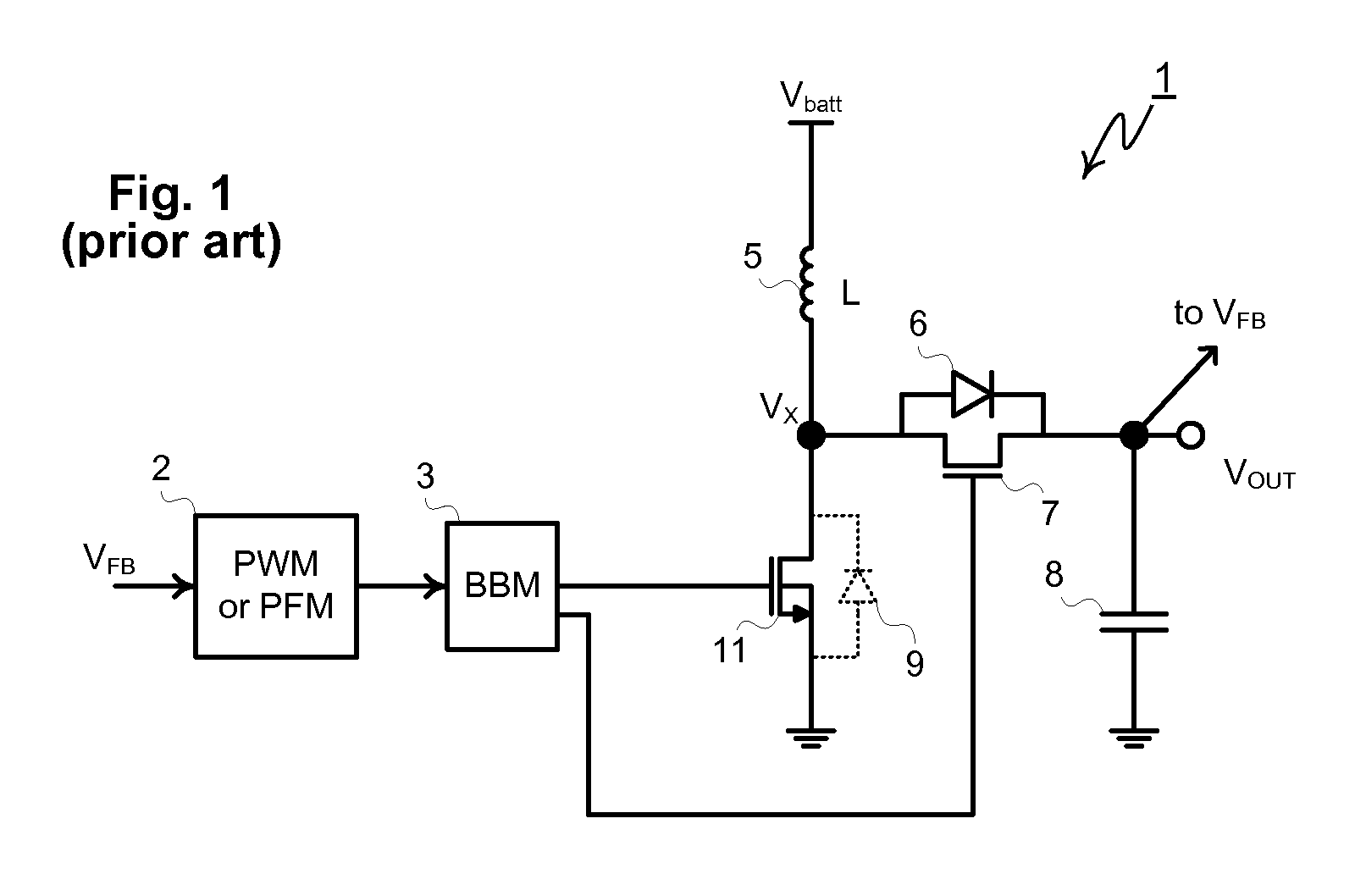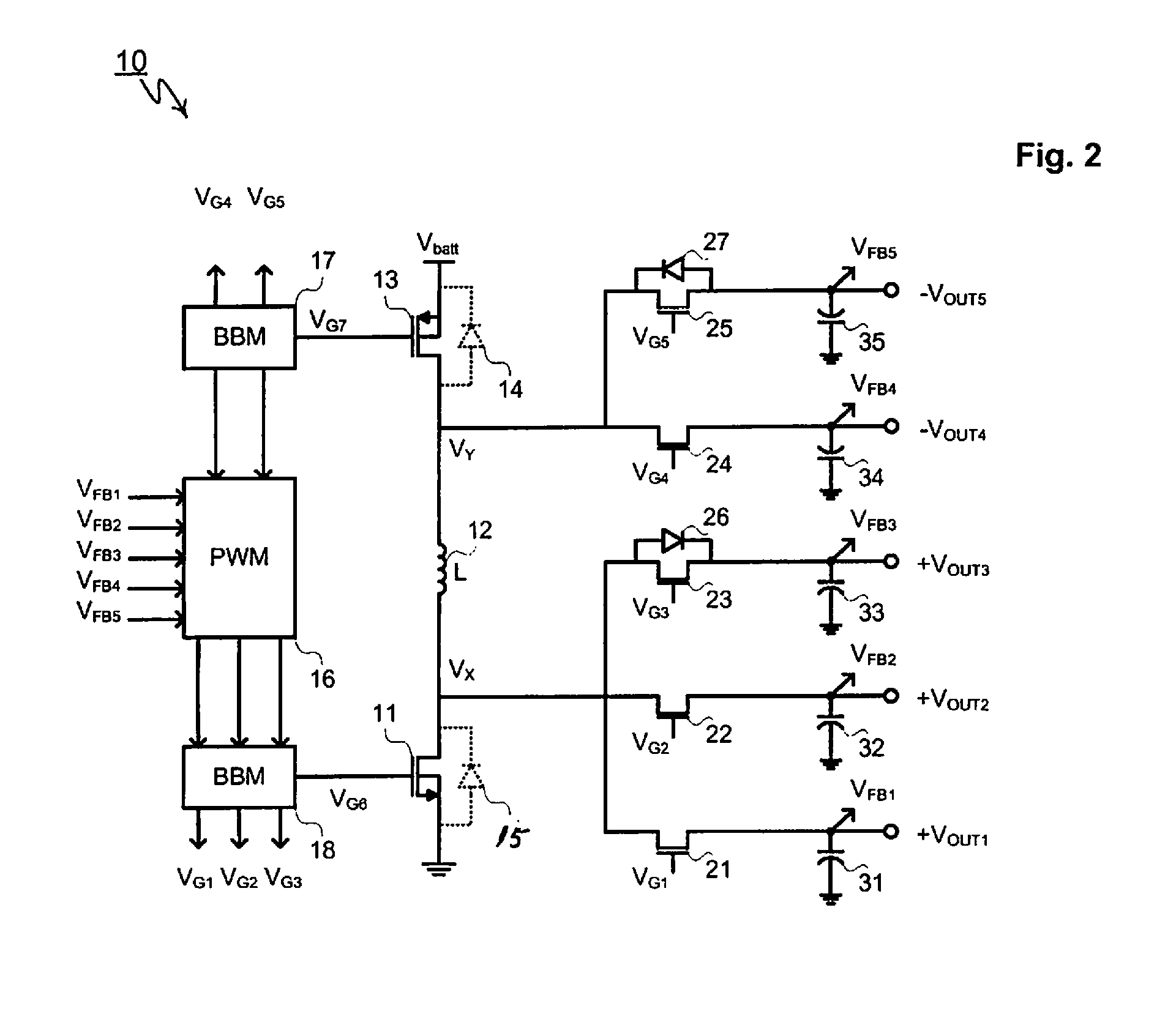Multiple-output dual-polarity DC/DC converters and voltage regulators
a dual-polarity dc/dc converter and voltage regulator technology, applied in the direction of dc-dc conversion, power conversion systems, instruments, etc., can solve the problems of low power dissipation in the switch, unfavorable unity transfer characteristics of boost converters, and unwanted strays
- Summary
- Abstract
- Description
- Claims
- Application Information
AI Technical Summary
Benefits of technology
Problems solved by technology
Method used
Image
Examples
Embodiment Construction
[0054]As described previously, conventional non-isolated switching regulators require one single-winding inductor and corresponding dedicated PWM controller for each regulated output voltage and polarity. In contrast, this disclosure describes an inventive boost converter able to produce multiple independently-regulated outputs of opposite polarity, i.e. one or more positive above-ground outputs and one or more negative below-ground output from one single-winding inductor.
[0055]Shown in FIG. 2, a five-output dual polarity inductive boost converter 10 comprises low-side N-channel MOSFET 11, inductor 12, high-side P-channel MOSFET 13, floating positive-output synchronous rectifier 23 with intrinsic source-to-drain diode 26, floating positive-output synchronous rectifiers 22 and 21 with no parallel source-drain diodes, floating negative-output synchronous rectifier 25 with intrinsic source-to-drain diode 27, floating negative-output synchronous rectifier 24 with no parallel source-drai...
PUM
 Login to View More
Login to View More Abstract
Description
Claims
Application Information
 Login to View More
Login to View More - R&D
- Intellectual Property
- Life Sciences
- Materials
- Tech Scout
- Unparalleled Data Quality
- Higher Quality Content
- 60% Fewer Hallucinations
Browse by: Latest US Patents, China's latest patents, Technical Efficacy Thesaurus, Application Domain, Technology Topic, Popular Technical Reports.
© 2025 PatSnap. All rights reserved.Legal|Privacy policy|Modern Slavery Act Transparency Statement|Sitemap|About US| Contact US: help@patsnap.com



